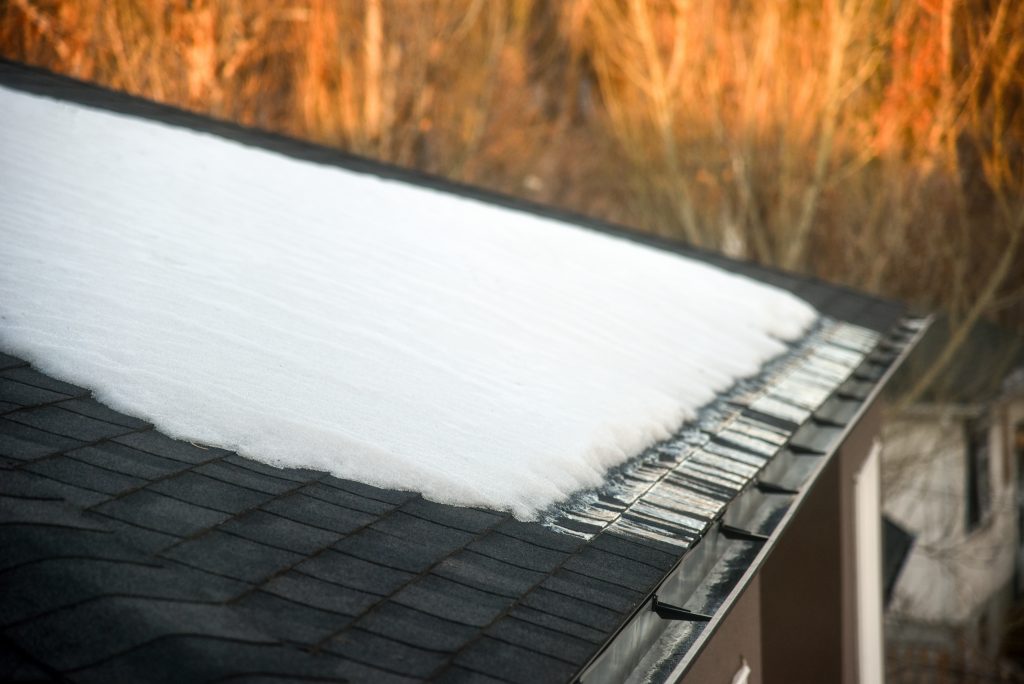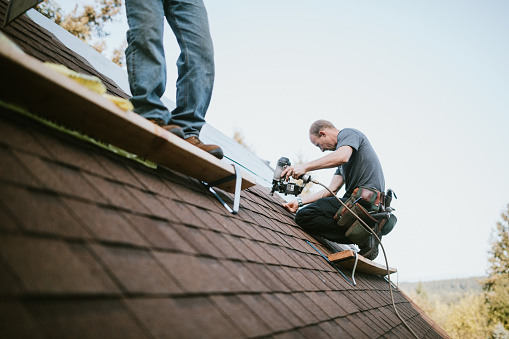As winter blankets our homes in a chilly embrace, the link between roofing and energy efficiency becomes more crucial than ever. A well-maintained and properly designed roof plays a pivotal role in ensuring your home remains warm and comfortable while keeping energy bills in check during the colder months. Ainger Roofing, a roofing company in Barrie, will explore the intricate connection between roofing and energy efficiency, unraveling how your roof can be a silent ally in the battle against winter’s chill.

1. Insulation: The Guardian Against Heat Loss
One of the primary contributors to energy efficiency in winter is the level of insulation provided by your roof. A well-insulated roof acts as a barrier, preventing heat from escaping your home. This not only keeps your living spaces cozy but also reduces the workload on your heating system, translating to lower energy consumption and cost savings.
2. Material Matters: Choosing Energy-Efficient Roofing
The choice of roofing materials significantly impacts energy efficiency. Certain materials possess inherent thermal properties that contribute to better insulation. For instance, asphalt shingles with reflective coatings can deflect sunlight, minimizing heat absorption in warmer climates. On the other hand, materials like metal roofing offer durability and the ability to reflect sunlight, making them energy-efficient choices in various environments.
3. Ventilation: Regulating Temperature for Efficiency
Proper roof ventilation is a key player in maintaining a balanced and energy-efficient indoor environment during winter. Adequate ventilation prevents the buildup of moisture in the attic, reducing the risk of mold and structural damage. It also helps regulate temperature, preventing heat from getting trapped and ensuring a consistent and comfortable atmosphere throughout your home.
4. Solar-Reflective Coatings: Harnessing the Winter Sun
Solar-reflective coatings, applied to roofing materials, are a game-changer in energy efficiency. These coatings reflect sunlight, preventing excessive heat absorption. During winter, when the sun is still shining but temperatures are low, this technology helps maintain a warmer interior without relying solely on heating systems, contributing to overall energy savings.
5. Daylighting: Maximizing Natural Light for Warmth
The strategic placement of windows, skylights, or light tubes in your roof can enhance daylighting during winter. Maximizing natural light not only reduces the need for artificial lighting but also brings in warmth. This dual benefit contributes to energy efficiency by minimizing electricity consumption and promoting a naturally well-lit and inviting living space.
6. Green Roofing Initiatives: A Holistic Approach
Embracing green roofing initiatives, where vegetation is integrated into roof design, offers a holistic approach to energy efficiency. Green roofs provide additional insulation, reducing heat loss during winter. They also absorb sunlight, aiding in temperature regulation, and contribute to overall environmental sustainability.
7. Regular Maintenance: Preserving Efficiency Over Time
The efficiency of your roof’s contribution to energy savings depends on its condition. Regular maintenance, including inspections for leaks, damaged insulation, or wear and tear, ensures that your roof operates at its peak efficiency. Addressing issues promptly prevents energy loss and extends the lifespan of your roofing system.
Conclusion: A Winter-Ready and Energy-Efficient Roof
As winter unfolds, the synergy between roofing and energy efficiency becomes increasingly evident. From insulation and material choices to ventilation, solar-reflective coatings, and green initiatives, your roof can be a proactive ally in keeping your home warm while minimizing energy consumption. Roofers in Barrie say that by understanding and optimizing these elements, you not only create a winter-ready haven but also contribute to a sustainable and cost-effective approach to home comfort.

